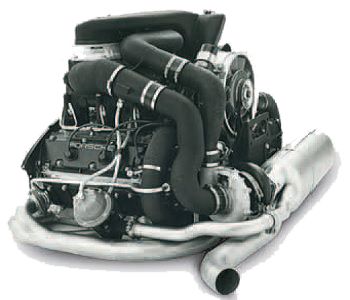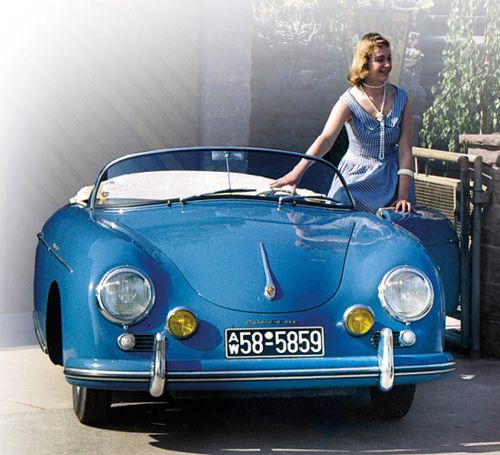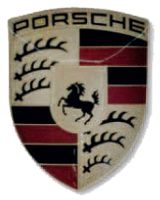A string of legendary road and race cars has borne the name of Ferdinand Porsche, one of the 20th century’s finest automotive engineers. The marque he founded has been synonymous with performance cars since the 1950s, and its most famous product, the Porsche 911, has been a sports-car icon for half a century.

The history Porsche began with: FERDINAND PORSCHE was born in 1875 in the town of Mattersdorf in Bohemia, part of Austro-Hungary (now part of the Czech Republic). The son of a plumber, he showed an early interest in all things mechanical and electrical, and went to work for an electrical company in Vienna.
There he developed the idea of electric wheel motors to propel a vehicle, a concept that came to fruition in the Löhner Porsche electric vehicle, displayed at the Paris World Fair in 1900. Ferdinand Porsche went on to design cars and aircraft engines for Austro-Daimler and Daimler-Benz, before setting up as a consulting engineer.

Porsche 911 flat-six turbo
A turbocharged version of Porsche’s air-cooled flat-six engine was introduced into the 911 in 1974, giving the car exhilarating acceleration.
He was hired to design Auto Union’s enormously powerful Grand Prix cars in the 1930s. In complete contrast, Porsche also designed the Volkswagen “people’s car,” which later became the world’s best-selling car when it went into production after World War II.
Porsche was into his 70s when he went into full-time car manufacture. His Volkswagen design provided the starting point, supplying the engine, suspension, and platform chassis for the one-off Type 64-a small coupé designed in 1939 for a race that never took place due to the outbreak of World War II.
In 1950 Porsche’s son Ferry revived and refined the concept into the 356, a road-going sports car that became the Porsche company’s first production model.The 356 was initially built at Porsche’s workshops in Gmünd, Austria, but as demand for the car increased, more space was needed to establish a proper assembly line.

Porsche 356 Speedster
Seen on the left alongside a 356 Coupe in 1956, the Speedster had a racy, cut-down windshield that was immediately distinctive.
By 1950 production had relocated to a larger factory in Zuffenhausen, a suburb of Stuttgart in southwest Germany. Ferdinand Porsche died the following year, at the age of 75. The 356’s flat-four engine was gradually increased in capacity from 1,086 cc to 1,488 cc by using special crankshafts and connecting rods.
There were also four-camshaft versions developed for racing, which proved both powerful and temperamental. In 1954 a lightweight version called the 356 Speedster became an instant hit in the United States, cementing Porsche’s reputation as the maker of the best small sports cars in the world. In 1963 Porsche replaced the 356 with the 911-a bigger, more refined, and more powerful car powered by a new 2.0-liter, air-cooled, flat-six engine.
Originally called the 901, the car was renamed the 911 to avoid confusion with Peugeot’s numbering system. The car’s simple styling was designed by Ferry’s son Ferdinand Alexander, who was also known as “Butzi.” The 911 was reliable and practical enough to use every day, yet it also offered scorching straight-line performance.

The rear-engined design ensured excellent traction, although it also produced oversteer, which could surprise an unwary driver. The 911 gradually became more powerful and faster, and in 1973 racing demands resulted in the iconic Carrera RS version, with its big-bore, 2.7-liter engine and lightweight body. In the 1960s and 70s, the 911 added to Porsche’s motor-sport success, which already included many class wins in sports-car races and even occasional success at the Formula 1 level.
The 911 triumphed in such classic events as the Monte Carlo Rally and Sicily’s Targa Florio, while the purpose-built 917 racers won the Le Mans 24-hour race in France. Porsche also dominated the North American Can-Am racing series in the early 1970s with its 1,000 bhp, flat-twelve turbo cars.
Porsches soon became the cars to beat: The 911-based 934 and 935 were typically the most numerous cars on the grid, while overall race honors were contested by the 936, 956, and 962 models. After nearly two decades away from Formula 1, Porsche made a successful return in 1983 as an engine supplier, designing the TAG turbo engine that powered McLaren’s Niki Lauda and Alain Prost to World Championship titles.
Tougher regulations on noise and emissions in the 1970s threatened to spell the end for the 911, and Porsche boss Ernst Fuhrmann was eager to move on to front-engined, water cooled cars. However, the V8-engined 928 and the entry-level 924 (later developed into the 944 and 968) failed to win the hearts of Porsche enthusiasts, whereas the 911 continued to do so.
The 911 Turbo of 1975 was renowned as one of the fastest-accelerating cars of its era. The ultimate derivative of the original long-running 911 series was the twin-turbo, four-wheel-drive 959, of which just 200 examples were produced between 1986 and 1989.

Porsche 911S, 1970
Topping the range of 911s, now all with a longer wheelbase and 2.2-liter engines, was the 180 bhp S model. With lighter handling and increased performance, it had a top speed of 230 mph (370 km/h).
A new-generation 911 model was introduced in 1989, followed by three further generations over the next two decades-each looking similar to the last, but offering new technology and ever-higher performance levels. In the early 1990s Porsche was producing good cars, but struggling to make money.
As a result, the front-engined cars were dropped, and Porsche developed the Boxster, an entry-level, mid-engined roadster that appealed to a new, younger customer. The Cayenne, a large SUV developed in partnership with Volkswagen, expanded the line-up in a different direction.
To answer criticisms that the Cayenne SUV was unnecessarily extravagant and wasteful, Porsche began to develop electric and hybrid powertrains for use in its future road-car models. In 2009 a bitter battle for control between Porsche and Volkswagen reached its climax.
Porsche had increased its shareholding in Volkswagen to more than 50 percent, but had built up considerable debts in doing so and could not raise sufficient capital for a full takeover. As Porsche struggled to cope with its debts, Volkswagen secured an agreement for the two companies to merge in 2011, which would see Porsche become the 10th car brand in the Volkswagen Group.